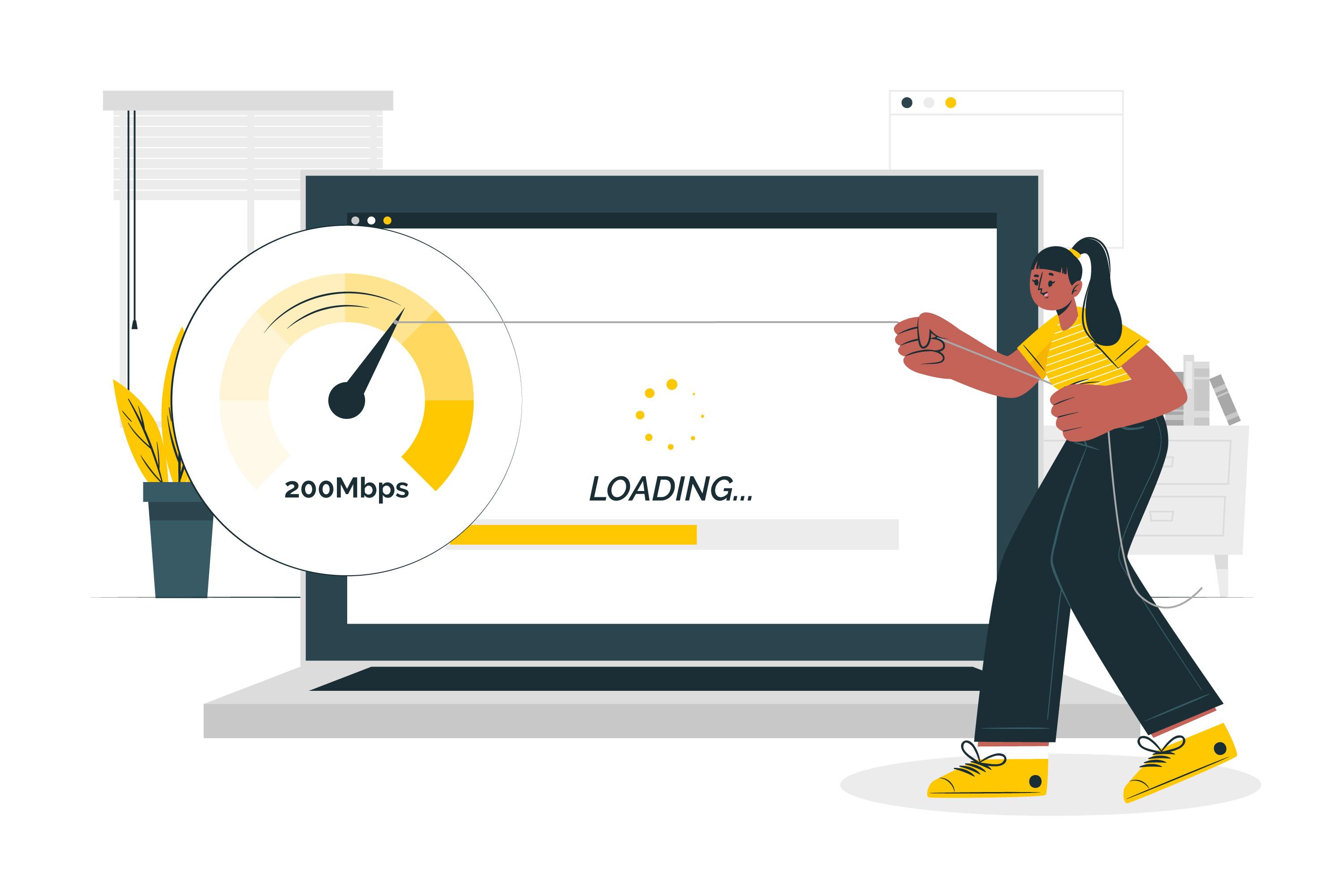Loading time of a website
 The Bytescode
The Bytescode
The loading time of a website is a crucial factor that can significantly impact user experience. Several factors can influence a website's load time, and it's essential to optimize them for a better user experience and SEO ranking.
Factors affecting the loading time of a website:-
Server Performance:-
The quality and performance of the web hosting server play a vital role in website loading speed. Ensure that you use a reliable and fast web hosting provider.
File Sizes:-
The size of files, such as images, videos, and scripts, directly affects load times. If the size of these files is much larger, then it takes much time to load. Compress and optimize these files to reduce their size while maintaining quality.
Browser Caching:-
Implement browser caching to store static assets like images and stylesheets in a user's browser. This allows returning visitors to load your site faster.
Content Delivery Network (CDN):-
Content Delivery Network plays a vital role in the load time of a website. A CDN distributes your website's content across multiple servers globally, reducing the physical distance between the user and the server, and resulting in faster load times.
Minification:-
Minification means removing unnecessary lines i.e. blank spaces. Minify HTML, CSS, and JavaScript files by removing unnecessary spaces, comments, and line breaks. Smaller files load faster.
Image Optimization:-
As we know there are multiple image formats used in websites such as .jpg, .jpeg, .png, etc. but use optimized image formats (e.g., WebP), serve appropriately sized images, and leverage lazy loading to load images as users scroll down the page.
Code Efficiency:-
Always try to write short code for the same thing. For example, if you write 100 lines of code for a website and another person writes 60 lines of code for the same thing. Write clean and efficient code.
Reduce HTTP Requests:-
Always try to reduce HTTP requests between the user and the server. Minimize the number of requests the browser needs to make to load a page by combining CSS and JavaScript files and reducing the use of external resources.
Mobile Optimization:
Suppose you develop a website for your computer system but if another person visits your website on his/her mobile phone, then it should be displayed according to the dimensions of his/her mobile phone. Always develop a mobile-first website, according to a survey 90% of user visits website on his/her mobile phone. If the website is not responsive i.e. automatically not adjusting in his/her phone/laptop/PC, then it’ll take a lot of time to load.
Ensure that your website is responsive and mobile-friendly. Mobile users expect quick load times, so optimizing for mobile is crucial.
Content Delivery:
Use content delivery networks (CDNs) to distribute content geographically, ensuring that users from different regions experience fast load times. CDN provides better and faster servicing.
Server-Side Caching:
Implement server-side caching mechanisms like opcode caching and object caching to reduce server processing time.
Database Optimization:
If you are developing a website in which databases are used, then database efficiency plays a vital role in the load time of a website. Optimize database queries, remove unnecessary data, and use indexing to improve database performance.
HTTP/2:
Use the HTTP/2 protocol, which allows multiple file requests to be served in parallel, reducing load times.
Gzip Compression:
Gzip is a compression/decompression technique. Suppose your website contains a lot of text then always try to use some compression techniques such as Gzip, Brotli, etc.
Enable Gzip or Brotli compression to reduce the size of text-based assets like HTML, CSS, and JavaScript.
Third-Party Scripts:
The loading time of third-party libraries can become an issue in the load time of your website. Always execute third-party libraries asynchronously. Limit or defer the loading of third-party scripts and resources that can significantly impact load times.
Content Prioritization:
Use techniques like critical path CSS and asynchronous loading to prioritize the loading of essential content before less critical resources.
Regular Performance Monitoring:
Continuously monitor your website's performance using tools like Google PageSpeed Insights, GTmetrix, or Pingdom. Nothing is Risk-free continuous assessment of a website can reduce your website's risk.
Regular testing helps identify bottlenecks and areas for improvement.
For more such content follow our page and subscribe to our newsletter.
Subscribe to my newsletter
Read articles from The Bytescode directly inside your inbox. Subscribe to the newsletter, and don't miss out.
Written by